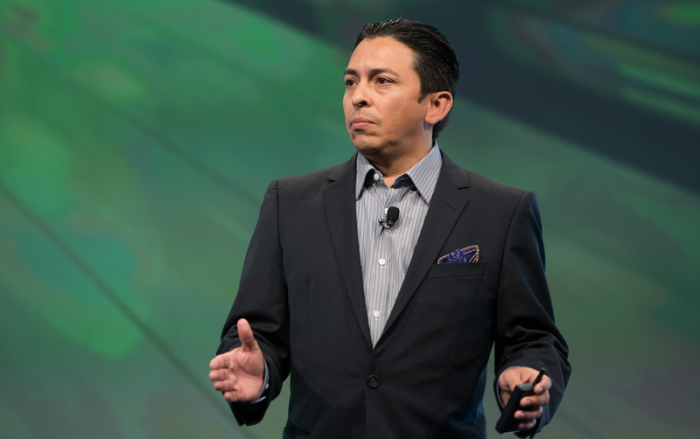by: Al Urbanski, DMN
Customer experience expert Brian Solis plays business psychoanalyst in mapping out the arduous conceptual journey to business reinvention.
Each business is a victim of Digital Darwinism, the evolution of consumer behavior when society and technology evolve faster than the ability to exploit it. –Brian Solis
Have marketers come to a crossroads at which they have to decide, once and for all, between scale and survival? It’s a choice that Brian Solis, noted author on tech disruption and principal of Altimeter Group, takes on in a new report called “The Race Against Digital Darwinism: Six Stages of Digital Transformation.” Trying to survive in the digital jungle, companies are not only challenged by upstart predators and sophisticated customers, but they’re also laden with the trappings of process and infrastructure that turned their humble organizations into industry behemoths in the first place.
“For the founders of these companies, it was all about taking over the world, but over the years everything has been scaled with process to provide the shareholder value and quarterly earnings that have become the metrics of success,” Solis says. “Then you have people like Mark Zuckerberg, who famously said he would always prioritize user experience over shareholder value.”
The road to digital transformation is mined with overbearing complexities—envisioning customer journeys, for one. “The customer mapping process is very complex. It has to constantly consider existing touchpoints—[customers are]digital, they’re mobile; they like apps,” Solis notes. And then there’s the vexing condition that digital transformation exists at varying levels in different parts of organizations. Solis’s most recent whack at Digital Darwinism is, he says, “an attempt to give managers a manifest to make progress toward change, to let them know they’re not alone.”
Indeed, Solis’s new report is part psychoanalysis and part business analysis. His six steps are reassuring pats on the back that say, “It’s OK; you’ll get through this and get to here, and then you’ll be there.” It’s business’s version of the five stages of grief—plus one. They are:
Stage 1: Business as usual. Leadership rebuffs change. Processes are built on legacy foundations and digital solutions are nailed onto them. Metrics are siloed, analytics are just a reporting function, and customer views are 180 degrees. IT owns technology roadmaps and new technologies rarely emerge from specific departments and applications. Customer experience (CX) strategies, too, are managed separately. The funnel rules.
Stage 2: Present and active. Customer experience metrics and social media listening starts. Increased competition forces exploration of new channels and pilots are launched in social, mobile, and digital. Digital champions emerge and management takes note. Rogue experiments lead to ongoing strategy and experimentation. Digital education is embraced.
Stage 3: Formalized. Transformation’s underway. Customer data begins influencing decisions and investigations are launched to locate gaps in data analytics. Collaboration intensifies company-wide and IT and marketing work together on a technology roadmap. Customer journey mapping ignites new priorities for both digital and traditional CX. Change agents are still in-house, but management supports executive education allowing them to extend their views outside the company.
Stage 4: Strategic. The customer assumes a seat at the center of the operation. Customer journeys have been mapped and shared among departments. Customer lifetime value studies are undertaken. Leaders track cross-channel results more closely as ROI is tied to marketing efforts. Senior managers give change agents a seat at the table, naming chief digital or chief experience officers. The funnel is reshaped for a more dynamic approach and investments are made in new people, processes, and technologies.
Stage 5: Converged. Common digital transformation frameworks are shared between departments, new executive talent and agencies are brought on board, and IT helps drive the CX train. Customer journeys are remapped to include experiential “micro-moments,” leading to further innovations that blend digital and traditional methods. There’s an upgrade to “experience cloud” technologies including Oracle, Salesforce, and IBM.
Stage 6: Innovative and adaptive. Digital is part of the transformed company’s DNA and a flatter management and decision model supplants the old hierarchy. CX drives not just product development and marketing, but also sales, service, and HR. An innovation team tracks new technological developments and talent gap analysis identifies new digital hires. Transformation management becomes the new “business as usual.”
“This is a story that’s usually told from the IT perspective, with technology roadmaps driving change,” Solis says, “but customer experience—and studying how people are changing—can drive more relevant and innovative, enterprise-wide change.”



Leave a Reply